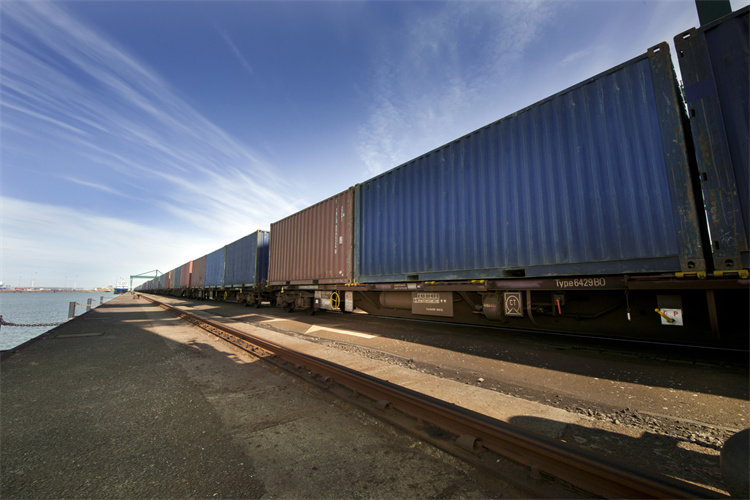Business Logistics Guide: 3PL vs 4PL Decision Making

Logistics plays a crucial role in your business's success. It ensures that products reach customers efficiently, enhancing satisfaction and loyalty. As the global logistics market is projected to grow from $8.96 trillion in 2023 to $15.79 trillion by 2028, choosing the right logistics partner becomes vital. You must decide between 3PL VS 4PL services. While both offer valuable logistics solutions, they differ in scope, control, and cost. Selecting the right partner can transform your supply chain into a cost-effective, responsive model, turning logistical challenges into competitive advantages.
Understanding Logistics
Definition and Importance
What is Logistics?
Logistics involves the detailed coordination of complex operations involving people, facilities, and supplies. It ensures that your products move smoothly from the point of origin to the end consumer. This process includes transportation, warehousing, inventory management, and order fulfillment. By managing these elements effectively, logistics helps you meet customer demands efficiently and maintain a competitive edge in the market.
Role in Business Success
Logistics plays a pivotal role in your business's success. Efficient logistics operations can reduce costs, improve delivery times, and enhance customer satisfaction. When you streamline logistics, you can focus on core business activities, leading to increased productivity and profitability. In today's fast-paced market, a robust logistics strategy can differentiate your business from competitors and drive long-term growth.
Types of Logistics Partners
Overview of 3PL
Third-Party Logistics (3PL) providers offer specialized services to manage specific logistics functions. These services include transportation, warehousing, and order fulfillment. By partnering with a 3PL, you can leverage their expertise and infrastructure to optimize logistics operations. This partnership allows you to focus on your core business while ensuring efficient product delivery. 3PLs provide flexibility and scalability, making them ideal for businesses looking to enhance specific aspects of their supply chain.
Overview of 4PL
Fourth-Party Logistics (4PL) providers take logistics management to the next level by overseeing the entire supply chain. They act as external supply chain managers, offering strategic insight and comprehensive management. A 4PL serves as a single point of contact, coordinating all logistics activities and ensuring seamless integration across the supply chain. This approach provides you with a holistic view of logistics operations, enabling better decision-making and strategic planning. By choosing a 4PL, you gain access to advanced logistics solutions that can transform your supply chain into a competitive advantage.
3PL vs 4PL: Key Differences

Roles and Responsibilities
Services Offered by 3PL
When you choose a Third-Party Logistics (3PL) provider, you gain access to specialized services. These include transportation, warehousing, and order fulfillment. A 3PL focuses on executing specific logistics tasks efficiently. They handle the movement and storage of your products, allowing you to concentrate on core business activities. By leveraging their expertise, you can enhance delivery speed and reduce costs.
Services Offered by 4PL
A Fourth-Party Logistics (4PL) provider offers a more comprehensive approach. They manage your entire supply chain, acting as an integrator. With pre-established relationships with multiple 3PLs, a 4PL coordinates all logistics activities. They provide strategic oversight and ensure seamless integration across platforms. This holistic management gives you a single view of inventory, empowering you to meet customer demands effectively.
Scope of Operations
Operational Focus of 3PL
3PLs excel in operational efficiency. They focus on executing logistics tasks with precision. Their services are ideal for businesses seeking agility and flexibility. You can quickly adapt to market changes by utilizing their targeted solutions. This operational focus allows you to optimize specific logistics functions without overhauling your entire supply chain.
Strategic Focus of 4PL
In contrast, a 4PL offers strategic vision. They manage the flow of products across all platforms, providing a unified view of your supply chain. By integrating technology, a 4PL enhances visibility into inventory and orders. This strategic focus enables better decision-making and long-term planning. You gain a competitive edge by transforming your supply chain into a cohesive, efficient network.
Choosing between 3PL VS 4PL depends on your business needs. If you require targeted logistics solutions, a 3PL might be the right choice. However, if you seek comprehensive management and strategic insight, consider partnering with a 4PL. Evaluate your logistics requirements carefully to make an informed decision.
Factors to Consider in Decision Making
When deciding between 3PL VS 4PL, you must evaluate several critical factors. Each choice offers unique benefits and challenges, so understanding your business needs is essential.
Supply Chain Complexity
Assessing Your Supply Chain Needs
Your supply chain's complexity plays a significant role in choosing between 3PL VS 4PL. If your operations involve intricate logistics processes, a 4PL might be more suitable. They provide comprehensive management and strategic oversight, which can streamline complex supply chains. Companies dealing with multifaceted supply chains often benefit from the holistic approach of a 4PL. However, if your logistics needs are straightforward, a 3PL can efficiently handle specific tasks like transportation and warehousing. By assessing your supply chain's intricacies, you can determine which provider aligns best with your operational goals.
Control and Flexibility
Level of Control with 3PL
Choosing a 3PL gives you more control over specific logistics functions. You can directly manage and adjust operations as needed. This flexibility allows you to respond quickly to market changes and customer demands. Businesses that prioritize agility often find 3PLs advantageous. They offer targeted solutions that enhance your ability to make swift decisions.
Level of Control with 4PL
In contrast, a 4PL takes on a more strategic role, reducing your direct control over day-to-day logistics operations. They integrate and oversee the entire supply chain, providing a unified view. This approach can lead to improved efficiency and strategic insight. While you may relinquish some control, you gain a partner focused on optimizing your logistics network. For businesses seeking long-term growth and strategic insight, a 4PL can be a valuable ally.
Cost Considerations
Cost Structure of 3PL
3PL services typically offer a cost-effective solution for businesses with specific logistics needs. They provide targeted services, allowing you to pay only for what you require. This cost structure can lead to significant savings, especially for smaller companies or those with limited logistics demands. By leveraging a 3PL's expertise, you can optimize costs while maintaining efficient operations.
Cost Structure of 4PL
On the other hand, 4PLs often come with higher costs due to their comprehensive service offerings. They manage the entire supply chain, which requires more resources and strategic oversight. However, this investment can yield substantial returns through enhanced efficiency and streamlined operations. For companies with complex logistics needs and strategic goals, the benefits of a 4PL can outweigh the costs. By evaluating your budget and logistics requirements, you can decide whether the extensive services of a 4PL align with your financial strategy.
Ultimately, the decision between 3PL VS 4PL hinges on your business's unique needs. Consider your supply chain complexity, desired level of control, and budget constraints. By carefully weighing these factors, you can choose a logistics partner that transforms your supply chain into a competitive advantage.
Advantages and Disadvantages

When deciding between 3PL VS 4PL, understanding the benefits and drawbacks of each option is crucial. This knowledge helps you make an informed decision that aligns with your business goals.
Benefits of 3PL
Cost Efficiency
Choosing a Third-Party Logistics (3PL) provider can significantly reduce your logistics costs. By outsourcing specific logistics functions, you avoid the expenses associated with maintaining in-house logistics operations. You pay only for the services you need, which can lead to substantial savings. This cost-effective approach allows you to allocate resources to other critical areas of your business, enhancing overall profitability.
Flexibility
3PLs offer remarkable flexibility. They adapt quickly to changes in demand, helping you respond to market fluctuations. This agility ensures that your logistics operations remain efficient and effective, even during peak seasons or unexpected surges in demand. With a 3PL, you can scale your logistics operations up or down as needed, providing you with the flexibility to meet customer expectations consistently.
Benefits of 4PL
Comprehensive Management
Fourth-Party Logistics (4PL) providers offer a holistic approach to supply chain management. They oversee the entire logistics process, ensuring seamless integration across all platforms. This comprehensive management gives you a single point of contact for all logistics activities, simplifying communication and coordination. By choosing a 4PL, you gain access to advanced logistics solutions that enhance efficiency and streamline operations.
Strategic Insight
A 4PL provides strategic insight into your supply chain. They analyze data and trends to optimize logistics operations, helping you make informed decisions. This strategic focus enables you to anticipate market changes and adjust your logistics strategy accordingly. With a 4PL, you gain a competitive edge by transforming your supply chain into a cohesive, efficient network that supports long-term growth.
Drawbacks of 3PL
Limited Control
While 3PLs offer flexibility and cost efficiency, they may limit your control over logistics operations. You rely on the provider to execute specific tasks, which can lead to challenges if their performance does not meet your expectations. This limited control may hinder your ability to implement immediate changes or adjustments. Businesses that prioritize direct oversight may find this aspect of 3PLs less appealing.
Drawbacks of 4PL
Choosing between 3PL VS 4PL involves weighing the benefits against potential drawbacks. While 4PLs offer comprehensive management and strategic insight, they often come with higher costs. The extensive services provided by a 4PL require more resources and strategic oversight, which can increase expenses. However, for companies with complex logistics needs, the investment in a 4PL can yield significant returns through enhanced efficiency and streamlined operations.
Ultimately, the decision between 3PL VS 4PL depends on your business's unique needs and priorities. Consider the level of control you desire, your budget constraints, and the complexity of your supply chain. By carefully evaluating these factors, you can choose a logistics partner that transforms your supply chain into a competitive advantage.
Drawbacks of 4PL
Higher Costs
Choosing a Fourth-Party Logistics (4PL) provider often involves higher costs. You invest in comprehensive services that manage your entire supply chain. This investment includes strategic oversight and advanced logistics solutions. While these services enhance efficiency, they require more resources.
Consider the following:
Comprehensive Management: A 4PL oversees all logistics activities. This holistic approach demands significant financial commitment. You pay for the integration and coordination of multiple logistics functions.
Strategic Insight: With a 4PL, you gain strategic insight into your supply chain. This advantage comes with a price. The expertise and technology needed to provide this insight increase costs.
Resource Allocation: You may need to allocate more budget to cover the extensive services a 4PL offers. This allocation can impact other areas of your business.
Jacob Roseburrough, Director of Marketing, notes that while both 3PLs and 4PLs offer valuable services, understanding their differences is crucial. A 4PL provides flexibility and strategic management, but these benefits come at a higher cost.
Evaluate your logistics needs and budget carefully. If your business requires comprehensive management and strategic planning, a 4PL might be worth the investment. However, ensure that the benefits align with your financial strategy.
Decision-Making Guide
Checklist for Choosing a Logistics Partner
Selecting the right logistics partner can transform your supply chain into a competitive advantage. To make an informed decision, consider the following checklist:
Evaluating Business Needs
Identify Core Requirements: Determine the specific logistics functions you need assistance with. Do you require transportation, warehousing, or comprehensive supply chain management? Understanding your core needs will guide you in choosing between a 3PL and a 4PL.
Assess Supply Chain Complexity: Evaluate the complexity of your supply chain. If your operations involve intricate logistics processes, a 4PL might be more suitable. They offer strategic oversight and comprehensive management, which can streamline complex supply chains.
Consider Control Preferences: Decide how much control you want over logistics operations. A 3PL allows you to maintain more direct control over specific functions, while a 4PL takes on a strategic role, integrating and overseeing the entire supply chain.
Analyze Cost Structure: Compare the cost structures of 3PL and 4PL services. A 3PL typically offers a cost-effective solution for targeted logistics needs, while a 4PL provides extensive services that may require a higher investment.
Long-term Goals
Define Strategic Objectives: Align your logistics partner choice with your long-term business goals. If you aim for strategic growth and comprehensive supply chain optimization, a 4PL might be the right fit. They provide strategic insight and advanced logistics solutions.
Evaluate Scalability Needs: Consider your future growth plans. A 3PL offers flexibility and scalability, allowing you to adapt quickly to market changes. However, if you anticipate significant expansion, a 4PL's holistic approach might better support your long-term vision.
Focus on Innovation and Technology: Determine the importance of innovation in your logistics strategy. A 4PL often integrates advanced technology solutions, providing a unified view of your supply chain and enhancing decision-making capabilities.
Prioritize Customer Satisfaction: Ensure that your logistics partner can meet customer demands efficiently. Both 3PLs and 4PLs offer valuable services, but understanding their differences is crucial. A 4PL provides a single point of contact for the supply chain, simplifying communication and coordination.
By carefully evaluating your business needs and long-term goals, you can choose a logistics partner that aligns with your strategic vision. This decision will not only enhance your supply chain efficiency but also support your overall business success.
In your logistics journey, understanding the differences between 3PL and 4PL is crucial. You must assess your logistics needs carefully. Consider factors like supply chain complexity, control preferences, and cost structures. By doing so, you can make an informed decision that aligns with your business goals. Choose a logistics partner that transforms your supply chain into a competitive advantage. Remember, the right choice can enhance efficiency, reduce costs, and drive growth. Take action today to secure a logistics strategy that supports your long-term success.
See Also
Exploring Efficient Logistics for Success in High-Tech Manufacturing
Reducing Costs in Logistics: Your Complete Handbook
Paving the Way: Digital Technology in Future Logistics
Harnessing Robotics in Logistics: Boosting Warehouse Efficiency
